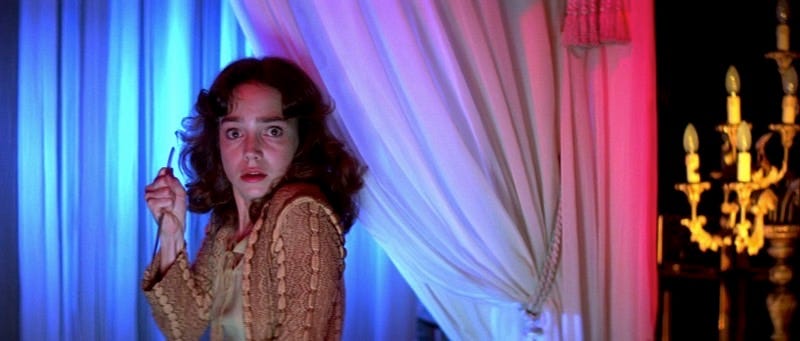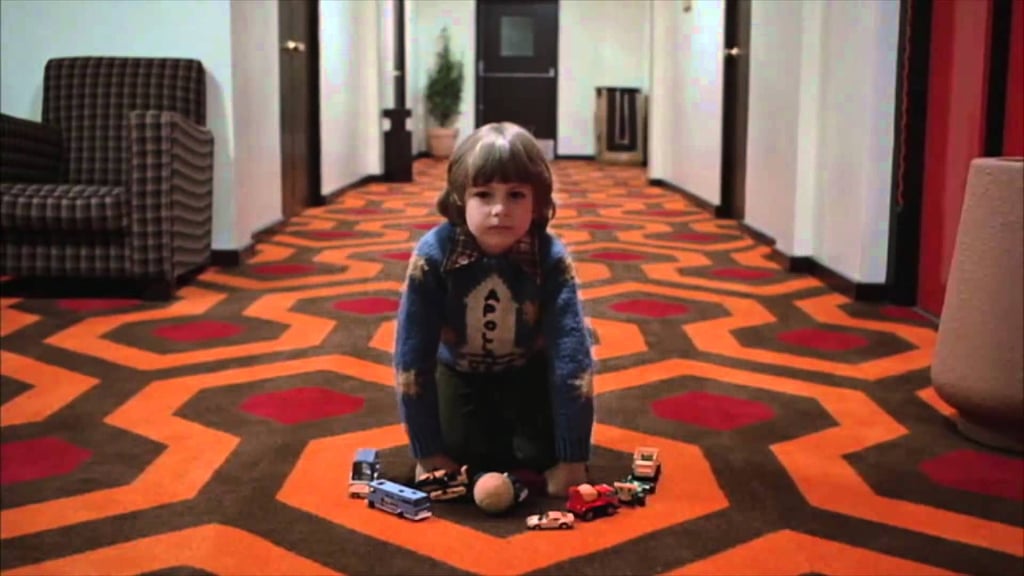Suspiria is a 1977 horror film, directed by Dario Argento. It follows a young dancer as she moves to Germany to go to the most acclaimed dancing school there. However, she finds out that something sinister is happening underneath the seemingly perfect façade.
Right from the beginning of the film, Argento makes the audience feel uneasy about what the audience is about to get into. As soon as the main character, Suzy, arrives at the airport, there is a fascinating scene where it switches between her in the airport, which features normal, everyday music, to the outside, where it is pouring down with rain and a far more alarming soundtrack is played: Argento's "own rock score (all dissonance and heavy-breathing) blasts out in stereo" (SM, no date). This foreshadowing of what is to come is so simple and subtle, but already sets the tone for the film.
 |
| Fig. 1 |
The use of colour in
Suspiria can only be described as making the film even more "unique, surreal, [and] hyper-intense" (Smith, 2000). The vivid red is everywhere, spelling out danger ahead. The colours are strong and unapologetic, and even though they are so unrealistic, it still fits well into the film overall. Along with the deafening rock metal track and the bright colours splashed across the screen,
Suspiria is certainly a unique film in the way it has been pieced together.
 |
| Fig. 2 |
Although Argento kills off many women in the film, which some argue is misogynistic, he also creates a heroine, which is perhaps his redeeming feature. "The character of Suzy is initially seen as hopelessly naive, but grows to become a strong, capable person." (Ebert, 2017). For a film made in 1977, it shows a very intelligent female lead, who ultimately cracks the case on the secret behind the dancing school.
 |
| Fig. 3 |
Bibliography
Ebert, R (2017). ""Do You Know Anything About Witches?" "Suspiria" at 40" in
Roger Ebert [online]. Available at: https://www.rogerebert.com/balder-and-dash/do-you-know-anything-about-witches-suspiria-at-40
Smith, A (2000). "Suspiria Review" in
Empire [online]. Available at: https://www.empireonline.com/movies/suspiria/review/
SM, (no date). "Suspiria" in
Time Out [online]. Available at: https://www.timeout.com/london/film/suspiria
Illustration List
Fig. 1 - https://blogger.googleusercontent.com/img/b/R29vZ2xl/AVvXsEiAy-8ZWQ20gQcar3zq1s5j-4wMV0sXJ6CByb1rxVdCV5XOqZMd0YQp7wvBLHhSg1KVNpC9x9HVGPYx1Rt9SMDg1bBZYVrFfnWVA8khQXn_JOV4A6SM1UWcDF9sP97gSMbnRlWv_JzGWEE/s1600/suspiria2.png
Fig. 2 - https://filmgrimoire.files.wordpress.com/2015/02/suspiria-214.jpg
Fig. 3 - https://i.kinja-img.com/gawker-media/image/upload/s--KtBhO-67--/c_scale,fl_progressive,q_80,w_800/mq7objrqlxbxzd9zxkwz.jpg






.jpg)


